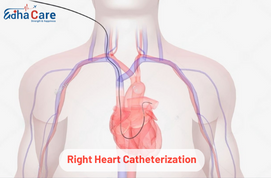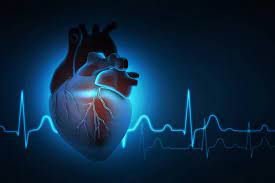Right Heart Catheterization

Right coronary artery catheterization is a diagnostic procedure used for measuring the right side of the heart's volume and function as well as the pulmonary system's circulation. During the procedure, a small, flexible tube called a catheter is introduced in the right part of the beating heart via the system of veins. This vein is usually found in the groin or neck. Once in position, a catheter may measure various hemodynamic variables such as right heart pressure, right atrial pressure, cardiac output, and pulmonary arterial pressure. To evaluate and track conditions such as coronary artery disease, heart attack, and hypertension of the pulmonary arteries, right heart catheterization is commonly utilized. It can provide helpful data to guide choices regarding treatment and assess the beneficial results of treatment. All things considered, right cardiac catheterization is a helpful instrument for managing cardiovascular diseases since it makes accurate hemodynamic status assessments possible and improves the treatment of patients.
Book an AppointmentAbout Right Heart Catheterization
Heart Catheterization Symptoms: Heart catheterization, a just invasive procedure, includes inserting a small tube (catheter) into a blood vessel leading to the heart. It could carry particular risks even though it is typically safe. Mild irritation or bruising at the site of catheter placement are common post-procedure symptoms, and they usually go completely soon. More serious consequences, though uncommon, can involve infection, bleeding, and allergic reactions to the contrast dye. Additionally, after or during the treatment, patients may have changes in their blood pressure, chest pain, or heartbeats that are erratic. Serious signs such as excruciating chest discomfort, breathing difficulties, or stroke indicators (such as sudden weakening or numbness) require medical attention right away. After heart catheterization, monitoring and follow-up care are necessary.
Heart Catheterization causes: Heart catheterization, a diagnostic and beneficial procedure for heart diseases, carries possible dangers. These involve bleeding at the catheter insertion site, allergic responses to contrast agents, stenosis or bleeding in arteries due to injury to the blood vessels, blood clot growth, heart arrhythmia damage to the kidneys from contrast agents, stroke or a brief ischemic attack as a result of clot dislodging, and infection. Complications are uncommon, but when they do occur, quick medical attention and close monitoring are required. Heart catheterization is secure and efficient when patients are made aware of the risks involved and medical professionals take preventative measures to reduce negative results.
Heart Catheterization remedies: Remedies following heart catheterization concentrate on controlling possible problems and promoting recovery. These involve giving medicine to relieve pain or prevent infection, keeping an eye out for bleeding or hematomas at the insertion site, and hydrating the person receiving surgery to flush out the contrast agent and avoid damage to the kidneys. Anticoagulants may be administered to patients in order to prevent clots in the blood, and cardiac monitoring can be performed in order to identify and treat arrhythmia. It's also crucial to keep a watchful eye out for signs of a stroke or an allergic reaction. Restarting activities gradually and mobilizing early aid in avoiding issues such as clots in the blood. Follow-up visits enable medical professionals to monitor the status of recovery and deal with any ongoing issues. After heart catheterization, the majority of patients can anticipate quick recovery with the right attention and supervision.
Procedure of Right Heart Catheterization
Patient preparing: The patient is set out on a medical table in a position of supine. At the spot of catheter insertion, which is commonly in the groin or neck, local anesthetic is given while vital signs are being closely monitored.
Insertion of Catheter: Under fluoroscopy or guided by ultrasound, a small, flexible catheter is put into a big vein, generally a femoral vein in the groin, and directed throughout the system of veins into the right side of the heart.
Pressure Measurement: Specialized catheter sensors are utilized to detect the pressure inside the right ventricle and atrium after the catheter enters these chambers. It helps in the evaluation of cardiac function and the diagnosis of diseases like heart failure or pulmonary hypertension.
Blood Sampling: To evaluate the amount of oxygen and other characteristics and to learn about the functioning of the lungs and heart, samples of blood are taken from different heart chambers.
Assessment of Cardiac Output: To evaluate heart function and circulation, the output of the heart and other hemodynamic variables are estimated using the thermodilution technique or other methods.
Optional procedures: A right heart catheterization can include the installation of a temporary pacemaker or balloon dilation of the heart valves, among other procedures.
Catheter Removal and Post-procedure Care: Once all measurements are complete, the catheter is carefully removed, and pressure is applied to the insertion site to prevent bleeding. The patient is monitored for a brief period post-procedure to ensure stability before discharge or further treatment.
Require Assistance?
Get A Quick Callback From Our Healthcare Experts






